Aquilegia canadensis
Aquilegia canadensis eastern red columbine
A beautiful perennial occurring in moist to dry conditions such as the rocky woodlands and slopes growing 1 to 3 feet tall from a stout caudex (a vertical underground stem). It is known for its showy nodding flowers, displaying striking red and yellow color combinations, essential for supporting hummingbird and insect pollination. These nodding flowers have five hollow red nectar spurs that point upward. The yellow stamens point downward so any pollinators have to come from below. Compound basal and stem leaves have 3-lobed leaflets.
Red columbine is a versatile plant that can survive in a wide range of habitats and is often cultivated for its attractive foliage. Since it is a self-seeder, it often returns year after year, creating a naturalized look in gardens.
Habitat & Range
Common in rich rocky woods and slopes, cliffs, ledges, pastures, and roadside banks. Prefers partial shade but can tolerate full sun when soil is moist. Thrives in well-drained, rich, moist soil but can adapt to different soil types.
Present throughout the state.
| EMP: | FAC |
|---|---|
| NCNE: | FACU |
Phenology
Flowers April to June.
Fruits from June to August.
Characteristics
Inflorescence panicle of 1, 2 or 3 solitary flowers on long stalks at the top of the stem
Flowers backward-pointing, spurred, bell-like; 2-4″ pedicels; appear singly or groups of 2-3; 5 flaring, red, petal-like ovate sepals, short-clawed; 5 yellow and red petals with a long nectar spur (blades yellow, spurs red); nectar spurs swollen at tips; numerous yellow stamens
Leaves basal & cauline, ternately compound (divided into 3-leaftlet groups), with each leaflet cuneate-obovate & three-lobed; cauline alternating up the slender stem
Stem slender, green to reddish green; may be slightly hairy, especially on the upper part of plant; branched above; there is also a vertical underground stem (caudex)
Fruit 5 to 7 erect, parallel, ascending follicles with a long, thin beak each; seeds shiny, round, black
Height 1-3 feet (12 -30 inches)
Plant Codes
S-rank: S5 (Secure)
G-rank: G5 (Secure)
Ecology
Main pollinators are ruby-throated hummingbirds and bumblebees. Caterpillars and larvae of various insects feed on the nectar. Mammals avoid this plant due to its toxic components and bitter taste.
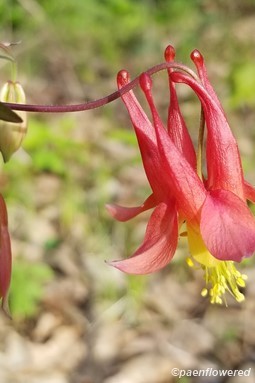
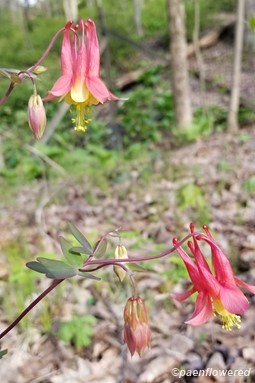
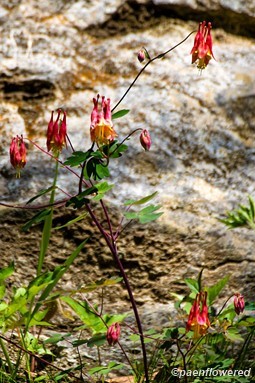
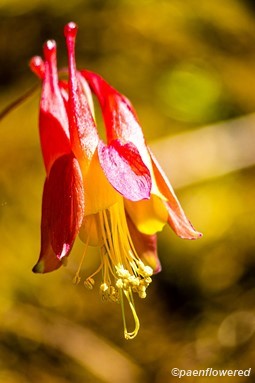
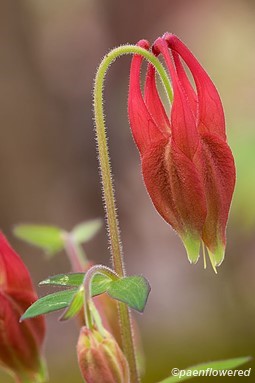
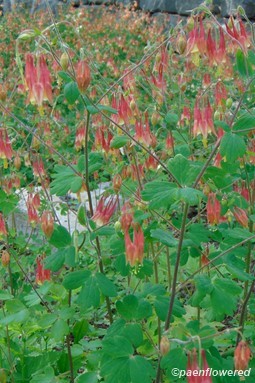
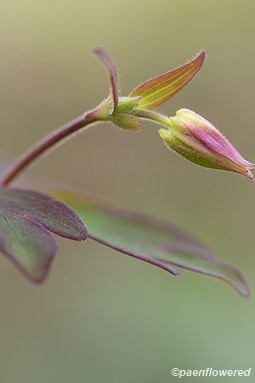
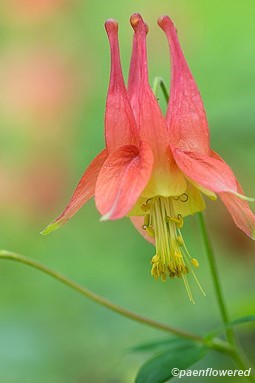


Comments
Have you spotted this plant in your area? We'd love to hear about your experience! Share your comments or questions about the plant below. Comments are moderated before posting.